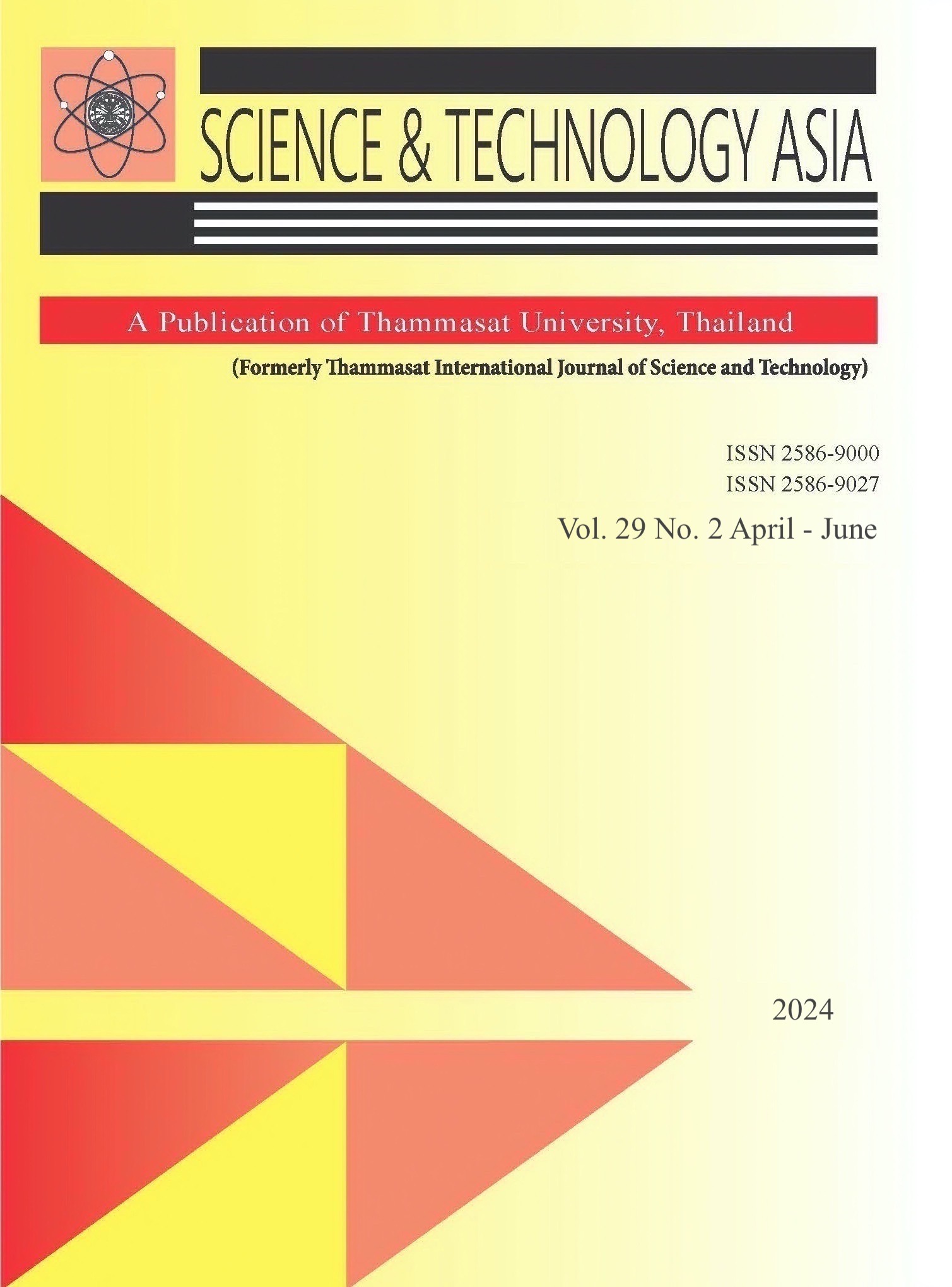Plus-Size Clothing Recommendation System Based on Sales Transaction Data Using FP-Growth Algorithm
Main Article Content
Abstract
The recommendation systems for the fashion industry have been widely studied. However, a study on the recommendation systems for the plus-size fashion market is limited. This study investigates the plus-size clothing sales recommendation system on an e commerce platform in Thailand using the FP-Growth algorithm. A total of 26,993 transaction records were collected during January 2021 to December 2022. The significance of the discovered rules is also examined to gain implicit knowledge about customer preferences in the plus-size clothing domain. The findings show the lists of association rules of the items that customers frequently purchase together. The model has a precision value of 7.88%, a recall of 4.23%, and an F1-score of 5.50%. The relatively low performance of the FP-Growth algorithm indicated the challenges of developing a recommendation system in this domain due to the limitation of the dataset and the diverse purchasing behavior of the plus-size customers. This study fills a research gap and provides a foundation for future research in recommendation systems for plus size clothing.
Article Details

This work is licensed under a Creative Commons Attribution-NonCommercial-NoDerivatives 4.0 International License.
References
S. Verghese. "Plus Size Clothing Market Outlook (2023 to 2033)." https://www.futuremarketinsights.com/reports/plus-size-clothing-market (accessed 7 July, 2022).
A. J. Büttner and M. A. Linardi, "Female Plus Size Consumer Challenge," ed, 2019.
C. Zhang and S. Zhang, Association rule mining: models and algorithms. Springer, 2002.
O. Dogan, F. C. Kem, and B. Oztaysi, "Fuzzy association rule mining approach to identify e-Commerce product association considering sales amount," Complex & Intelligent Systems, 2022;8(2):1551-60.
A. W. Mbugua and A. O. Omondi, "An Application of association rule learning in recommender systems for e-Commerce and its effect on marketing," 2017.
K. Malik, N. Raheja, and P. Garg, "Enhanced FP-growth algorithm," International Journal of Computational Engineering and Management, 2011;12:54-56.
D. Hunyadi, "Performance comparison of Apriori and FP-Growth algorithms in generating association rules," in Proceedings of the 5th European conference on European computing conference, 2011, pp. 376-81.
H. Li, Y. Wang, D. Zhang, M. Zhang, and E. Y. Chang, "PFP: parallel FP-Growth for query recommendation," in Proceedings of the 2008 ACM conference on Recommender systems, 2008, pp. 107-14.
A. M. Said, P. Dominic, and A. B. Abdullah, "A comparative study of FP Growth variations," International Journal of Computer Science and Network Security, 2009;9(5):266-72.
R. Ranjan and A. Sharma, "Evaluation of frequent itemset mining platforms using Apriori and FP-growth algorithm," arXiv preprint arXiv:1902.10999, 2019.
R. Agrawal, T. Imielinski, and A. Swami, "Mining associations between sets of items in large databases," in Proceedings of the ACM SIGMOD International Conference on Management of Data, 2019, pp. 207-16.
Z. Khanzadeh and M. Mahdavi, "Utilizing association rules for improving the performance of collaborative filtering," International Journal of EEntrepreneurship and Innovation (IJEEI), 2012;3(2):14-28.
Y. K. Choi and S. K. Kim, "A Recommendation System for Repetitively Purchasing Items in E-commerce Based on Collaborative Filtering and Association Rules," Journal of Internet Technology, 2018;19(6):1691-8.
J. Heaton, "Comparing dataset characteristics that favor the Apriori, Eclat or FP-Growth frequent itemset mining algorithms," in SoutheastCon 2016, 2016: IEEE, pp. 1-7.
M. R. Pradana, M. Syafrullah, H. Irawan, J. C. Chandra, and A. Solichin, "Market basket analysis using FP-Growth algorithm on retail sales data," in 2022 9th International Conference on Electrical Engineering, Computer Science and Informatics (EECSI), 2022: IEEE, pp. 86-89.
M. Wojciechowski, K. Galecki, and K. Gawronek, "Concurrent processing of frequent itemset queries using FP-Growth algorithm," in Proceedings of the 1st ADBIS Workshop on Data Mining and Knowledge Discovery. Publishing House of Poznan University of Technology, 2005, pp. 35-46.
C. Guan, S. Qin, W. Ling, and G. Ding, "Apparel recommendation system evolution: an empirical review," International Journal of Clothing Science and Technology, 2016;28(6):854-79.
S. Sharma, L. Koehl, P. Bruniaux, X. Zeng, and Z. Wang, "Development of an intelligent data-driven system to recommend personalized fashion design solutions," Sensors, 2021;21(12):4239.
Y. Wakita, K. Oku, H.-H. Huang, and K. Kawagoe, "A fashion-brand recommender system using brand association rules and
features," presented at the 2015 IIAI 4th International Congress on Advanced Applied Informatics, 2015.
Y. Guo, M. Wang, and X. Li, "Application of an improved Apriori algorithm in a mobile e-Commerce recommendation system," Industrial Management & Data Systems, 2017;117(2):287-303.
Y. Deldjoo et al., "A review of modern fashion recommender systems," ACM Computing Surveys, 2023;56(4):1-37.


